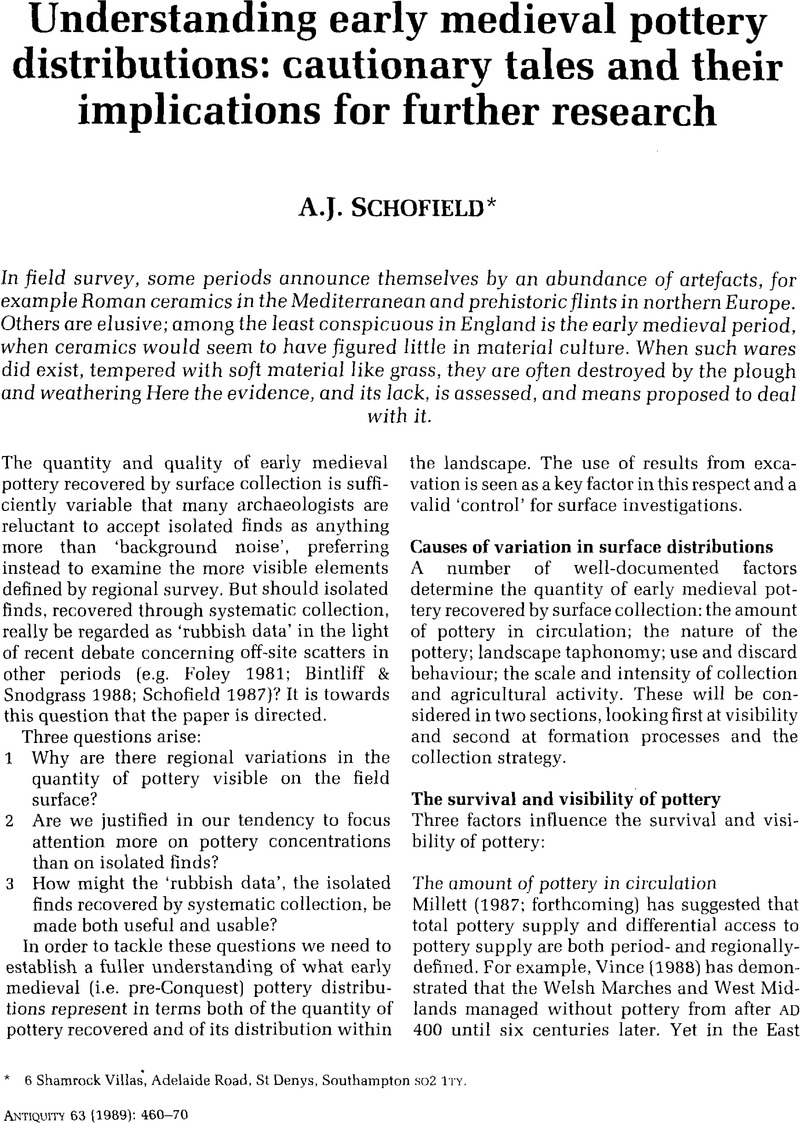Crossref Citations
This article has been cited by the following publications. This list is generated based on data provided by Crossref.
Scull, Christopher
Ager, Barry
Bourn, Robert
Cameron, Esther
Clogg, P. W.
Creighton, John
Edwards, Glynis
Gelling, Margaret
Gilmour, Brian
Harman, Mary
Henry, Pippa
Holgate, Robin
Huntley, Jacqueline P.
Johnson, Paul
Linford, Neil
Marlow, C. A.
Mortimer, Catherine
Mudd, Andrew
Odenstedt, Bengt
Page, R. I.
Price, Jennifer
Payne, Andy
Stallibrass, Sue
Watson, Jacqui
Watkins, Sarah
and
Webster, David
1992.
Excavation and Survey at Watchfield, Oxfordshire, 1983–92.
Archaeological Journal,
Vol. 149,
Issue. 1,
p.
124.
Hollevoet, Yann
2002.
d'Hooghe Noene van midden Bronstijd tot volle Middeleeuwen. Archeologisch onderzoek in een verkaveling langs de Zandstraat te Varsenare (gem. Jabbeke, prov. West-Vlaanderen)..
Archeologie in Vlaanderen,
p.
161.
Davies, Gareth
2010.
Early Medieval 'Rural Centres' and West Norfolk: A Growing Picture of Diversity, Complexity and Changing Lifestyles.
Medieval Archaeology,
Vol. 54,
Issue. 1,
p.
89.
Fazioli, K. Patrick
2014.
A Multidisciplinary Approach to Medieval and Early Modern Land Use: a Case Study from Southeastern Austria.
Archaeological Prospection,
Vol. 21,
Issue. 4,
p.
235.
Filzwieser, Roland
Olesen, Lis Helles
Neubauer, Wolfgang
Trinks, Immo
Mauritsen, Esben Schlosser
Schneidhofer, Petra
Nau, Erich
and
Gabler, Manuel
2017.
Large‐scale geophysical archaeological prospection pilot study at Viking Age and medieval sites in west Jutland, Denmark.
Archaeological Prospection,
Vol. 24,
Issue. 4,
p.
373.
Filzwieser, Roland
Olesen, Lis Helles
Verhoeven, Geert
Mauritsen, Esben Schlosser
Neubauer, Wolfgang
Trinks, Immo
Nowak, Milena
Nowak, Rebecca
Schneidhofer, Petra
Nau, Erich
and
Gabler, Manuel
2018.
Integration of Complementary Archaeological Prospection Data from a Late Iron Age Settlement at Vesterager—Denmark.
Journal of Archaeological Method and Theory,
Vol. 25,
Issue. 2,
p.
313.
Sartori, Julieta
Carrasco, Aylen
and
Ramonell, Carlos
2022.
Experimental study in flume with pottery sherds: first implication for insular sites located in the middle Paraná River, Argentina.
SN Social Sciences,
Vol. 2,
Issue. 10,
Gruškovnjak, Luka
2025.
Surveying along the Slopes: Evaluating the Impact of Geomorphic Processes on Field Survey’s Site Discovery Effectiveness.
Journal of Field Archaeology,
Vol. 50,
Issue. 2,
p.
106.



